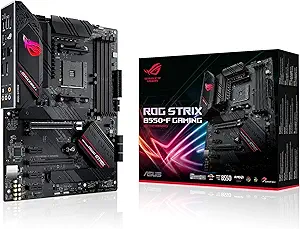The Ultimate Buying Guide for Raspberry Pi: Types, Key Considerations, Features, Prices, Tips, and FAQs
Overview
Raspberry Pi is a single-board computer that has gained popularity for its versatility, affordability, and ease of use. It is a great tool for DIY projects, learning programming, and exploring electronics. This buying guide will help you choose the right Raspberry Pi for your needs by providing an overview of the different types, key considerations, features, prices, tips, and FAQs.
Types
There are several types of Raspberry Pi available, each with its own specifications and features. Here are the most popular ones:
1. Raspberry Pi 4: This is the latest and most powerful model, with a quad-core processor, up to 8GB of RAM, dual-band WiFi, Bluetooth 5.0, and USB 3.0 ports. It is ideal for demanding projects that require high performance.
2. Raspberry Pi 3: This is the previous model, with a quad-core processor, up to 1GB of RAM, WiFi, Bluetooth 4.1, and USB 2.0 ports. It is still a good choice for most projects.
3. Raspberry Pi Zero: This is the smallest and cheapest model, with a single-core processor, 512MB of RAM, mini HDMI and USB ports, and no Ethernet or WiFi. It is ideal for small projects that require minimal resources.
Key Considerations
When choosing a Raspberry Pi, there are several key considerations to keep in mind:
1. Purpose: What do you want to use the Raspberry Pi for? Different models have different capabilities and features, so choose one that fits your needs.
2. Performance: If you need high performance, choose a model with a faster processor, more RAM, and faster connectivity options.
3. Compatibility: Make sure that the Raspberry Pi is compatible with the operating system and software that you want to use.
4. Accessories: Consider the accessories that you need, such as a power supply, SD card, case, and peripherals.
Features
Here are some of the features that you should look for in a Raspberry Pi:
1. GPIO pins: These are general-purpose input/output pins that allow you to connect sensors, actuators, and other devices to the Raspberry Pi.
2. HDMI output: This allows you to connect the Raspberry Pi to a monitor or TV.
3. USB ports: These allow you to connect peripherals such as a keyboard, mouse, and storage devices.
4. Ethernet port: This allows you to connect the Raspberry Pi to a network.
5. WiFi and Bluetooth: These allow you to connect the Raspberry Pi to wireless networks and devices.
6. SD card slot: This is where you insert the SD card that contains the operating system and software.
Prices
The prices of Raspberry Pi vary depending on the model and the accessories that you need. Here are the approximate prices:
1. Raspberry Pi 4: $35 to $75
2. Raspberry Pi 3: $25 to $35
3. Raspberry Pi Zero: $5 to $15
Tips
Here are some tips to help you get the most out of your Raspberry Pi:
1. Choose the right operating system: There are several operating systems available for Raspberry Pi, such as Raspbian, Ubuntu, RetroPie, and Kodi. Choose one that fits your needs.
2. Join the community: There is a large and active community of Raspberry Pi enthusiasts who share projects, tutorials, and tips. Join forums and social media groups to learn from others.
3. Explore projects: There are countless projects that you can do with Raspberry Pi, such as home automation, robotics, media center, gaming, and education. Explore tutorials and guides to find inspiration.
FAQs
Q: What is Raspberry Pi?
A: Raspberry Pi is a single-board computer that is designed for DIY projects, learning programming, and exploring electronics.
Q: What can I do with Raspberry Pi?
A: You can do a wide range of projects with Raspberry Pi, such as home automation, robotics, media center, gaming, and education.
Q: How do I choose the right Raspberry Pi?
A: Consider the purpose, performance, compatibility, and accessories that you need.
Q: What operating systems are available for Raspberry Pi?
A: There are several operating systems available for Raspberry Pi, such as Raspbian, Ubuntu, RetroPie, and Kodi.
Q: Where can I buy Raspberry Pi?
A: Raspberry Pi is available from several online and offline retailers, such as Amazon, Adafruit, and Micro Center.
Q: Do I need programming skills to use Raspberry Pi?
A: Basic programming skills are helpful, but not required. There are many resources available to help you learn programming.













